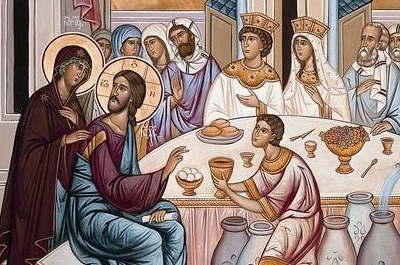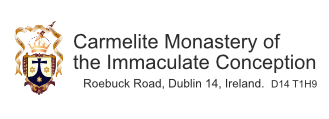2nd Sunday in Ordinary Time 2025
Isaiah 62:1-5 1 Corinthians 12:4-11 John 2:1-11
 We have just finished celebrating the liturgical Season of Epiphany but epiphany still goes on! ‘Epiphany’ means manifestation, showing or revelation. For Christians this epiphany is the revelation to us of Jesus as Word made flesh and beloved Son of the Father. But it does not end until we come to the fullness of revelation when, at last, we will see God face to face.
We have just finished celebrating the liturgical Season of Epiphany but epiphany still goes on! ‘Epiphany’ means manifestation, showing or revelation. For Christians this epiphany is the revelation to us of Jesus as Word made flesh and beloved Son of the Father. But it does not end until we come to the fullness of revelation when, at last, we will see God face to face.
The story of the Wedding Feast at Cana (our gospel for today) might be seen as another stage of the process of epiphany. We are all familiar with the first stage of this season of Epiphany, when we celebrated the coming of the three Wise-men to Bethlehem. They represented all of us outside Jerusalem, the Gentiles, and pointed us towards the new-born King. They bow down in Adoration and offer gifts. They prompt us to do the same; adore the Lord and bring our gifts to his service.
The second stage of the Epiphany season takes place on the banks of the river Jordan where John the Baptist points to the ‘Lamb of God’ and the voice of the Father Himself reveals that Jesus is ‘My beloved Son’. When the disciples engage with Jesus he invites them ‘to come and see’. This very personal and intimate invitation is given to us too. We respond by giving time to the Lord in our personal prayer.
The next stage of this Epiphany process happens at Cana in Galilee. Mary is the central character here and it is she who points to the Lord and prompts us to another act of discipleship: ‘Do whatever He tells you’. Part of knowing the Lord and being disciples is doing whatever the Lord requires of us.
During this Liturgical Year (Year C) we read from the Gospel of Saint Luke on most Sundays but on many occasions the Gospel of Saint John is used to give emphasis to important aspects of our Faith and our discipleship. Saint John mentions the Mother of God on only two occasions in his Gospel. On both occasions he has Jesus call His Mother “Woman”. “Woman, my hour has not yet come”may seem to us a little disrespectful and dismissive. But the other time when John has Jesus address His Mother is when she stands by His Cross: “Woman, behold your son”. By using ‘woman’ to address Mary, Jesus seems to be teaching all of us that this not just his mother but that she is ‘woman’, mother for all. Then John, on behalf of all disciples, receives her into his heart: “Here is your Mother”.
Today’s Gospel reading is full of wonderful symbols and symbolism. The very term ‘wedding’ reminds us of the wonder of earth being wedded to heaven by the event of the Incarnation, God becoming flesh. ‘Water’ is for cleansing, purification and giving life which is what the Lord used it for. ‘Wine’ is the drink of celebration and is the fruit of the vine which is poured out for our salvation. But most significant of all in this Gospel story of Cana is the presence of Mary, our Mother revealing the Lord to us and giving us her only instruction ever: “Do whatever He tells you”.
